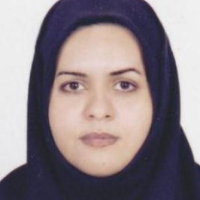Evaluation of Yield and Yield Components of Different Faba Bean (Vicia faba L.) Varieties in Intercropping with Triticale (Tritico secale)
Intercropping, i.e. growing two or more crops together on the same land at the same time. The intercropped legumes/cereal systems reduce inter-specific competition by enhancing complementarity/facilitation processes thereby improving the exploitation of environmental resources; on the other hand, it has led to improved crop production, which is due to greater efficiency in the intercropping system. Salehi et al. (2018) in intercropping of triticale with annual legumes reported that the highest plant height, number of spike per m-2, spikelet number per spike, grain number per spike, grain and biological yield of triticale were obtained in the sole crops but the lowest economic yield of triticale was achieved from intercropping of triticale with vetch, respectively. The purpose of this study was to investigate the response of growth, yield and yield components for different fababean cultivars affected as in intercropping with triticale in order to achieve the most suitable combination in terms of maximum yield and land use efficiency in Urmia weather conditions.
In order to evaluate yield and yield components of different faba bean varieties in intercropping with triticale, a field experiment was conducted based on a randomized complete block design with thirteen treatments and three replications at the Research Farm of the Faculty of Agriculture, Urmia University, Iran, during the growing season of 2018. Treatments were included sole cropping of triticale, replacement intercropping of triticale with five-faba bean varieties (Mahta, Histal, Feyz, Barkat, Luzde otono and Shadan) in ratios 1:1. Triticale was harvested when spike turned brown and different faba bean varieties were harvested when the first pod of the plants fully matured. Field data were collected by cutting 10 plants randomly from each plot and yield component of each plant was considered as the average for each plot. Analysis of variance (ANOVA) was performed using SAS software; version 9.4 (SAS Institute Inc., Cary, NC, USA) and significant differences between treatments were compared with the Duncan test at P≤0.05.
The results showed that the highest plant height, spike length, number of spike per m-2, spikelet number per spike, grain number per spike, grain and biological yield, and chlorophyll a and b contents of triticale were obtained in the intercropping system. Also, the maximum nodule number, nodule dry weight, plant height, length pods, number of seeds per pod, 100- seed weight, seed and biological yield, and chlorophyll a and b contents of different faba bean varieties were achieved from intercropping and the lowest amounts of mentioned were recorded in the sole cropping of both plants, respectively. The higher seed yields of the intercropping systems compared to the sole cropping were probably due to the better use of environmental resources by balancing inter-specific and intra-specific interactions. The average chlorophyll content of both plants in the intercropping system was higher than the sole cropping. Increasing the chlorophyll content in the intercropping system was attributed to the better availability of nutrients, light, and water. However, the partial LER of faba bean was higher than triticale, indicating that the former was the dominant plant in intercropping patterns. In addition, the highest LER total was calculated for intercropping triticale with Feyz faba bean (2.2 units) and the lowest total LER (1.9) was computed to the triticale with Barkat faba bean hat represents an increased advantage in intercropping than sole cropping.
Our study showed that the productivity of different faba bean varieties in intercropping with triticale could be increased by environmental conditions. The maximum seed and biological yield of both plants were obtained at intercropping. The LER was higher than one in all intercropping treatments compared to sole cropping systems. According to the results, it seems that the use of the intercropping system is remarkably effective to increase the economic income and land-use efficiency.
- حق عضویت دریافتی صرف حمایت از نشریات عضو و نگهداری، تکمیل و توسعه مگیران میشود.
- پرداخت حق اشتراک و دانلود مقالات اجازه بازنشر آن در سایر رسانههای چاپی و دیجیتال را به کاربر نمیدهد.



